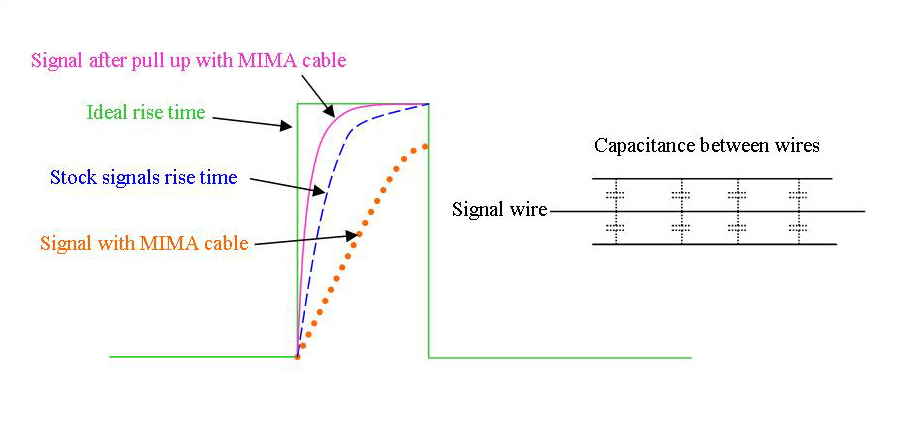|
Why the cable effects the pulse
|
 | |
|
Cable capacatance slows rise time
|
Sending signals through unshielded wires in a noisy environment like the Insight requires that the signals have the full 0 to 5V swings that standard 5 V logic Ic's require. The cables have capacitance to ground and to adjacent wires, so keeping the overall impedance of the wires low helps to maintain the full swings.
When the car designers look at the path of a signal, they consider all the effects that will effect this signal integrity.
One common approach, that is used heavily in the Insight is to use open collector driver transistors on the sending module, and a pull up resistor that can get the required rise time on the receiving side to pull the line high when the transistor turns off.
This resistor on the MCM MAMODE line was sized for the normal range of line capacitance expected in the car. The speed the resistor can pull the line high is directly related to how much capacitance there is between this wire and its neighbors over the entire length of the cable. Longer cable more capacitance, and as many will remember from basic electronics, capacitors store energy, so the low condition on this wire will act like a discharged capacitor. when it wants to pull high, the transistor turns off, and the resistors job is to as rapidly as possible charge the capacitor, as it pulls the line towards 5V. The MIMA cables add some capacitance to this signal path, and therefore it cannot charge to 5V as rapidly as the stock harness can. I know that earlier MIMA systems did not have problems with this, and I suspect that the cables we used then were of higher quality than the ones available now.
Almost all of the older style DB 25 and centronics cables are being made in China.
The only way tot be sure a cable will work is to buy and test many cables from many sources,I decided it would be better to simply add the 4 cent additional pull up resistor, and make the cable capacitance sensitivity issue go away.
|
|
|